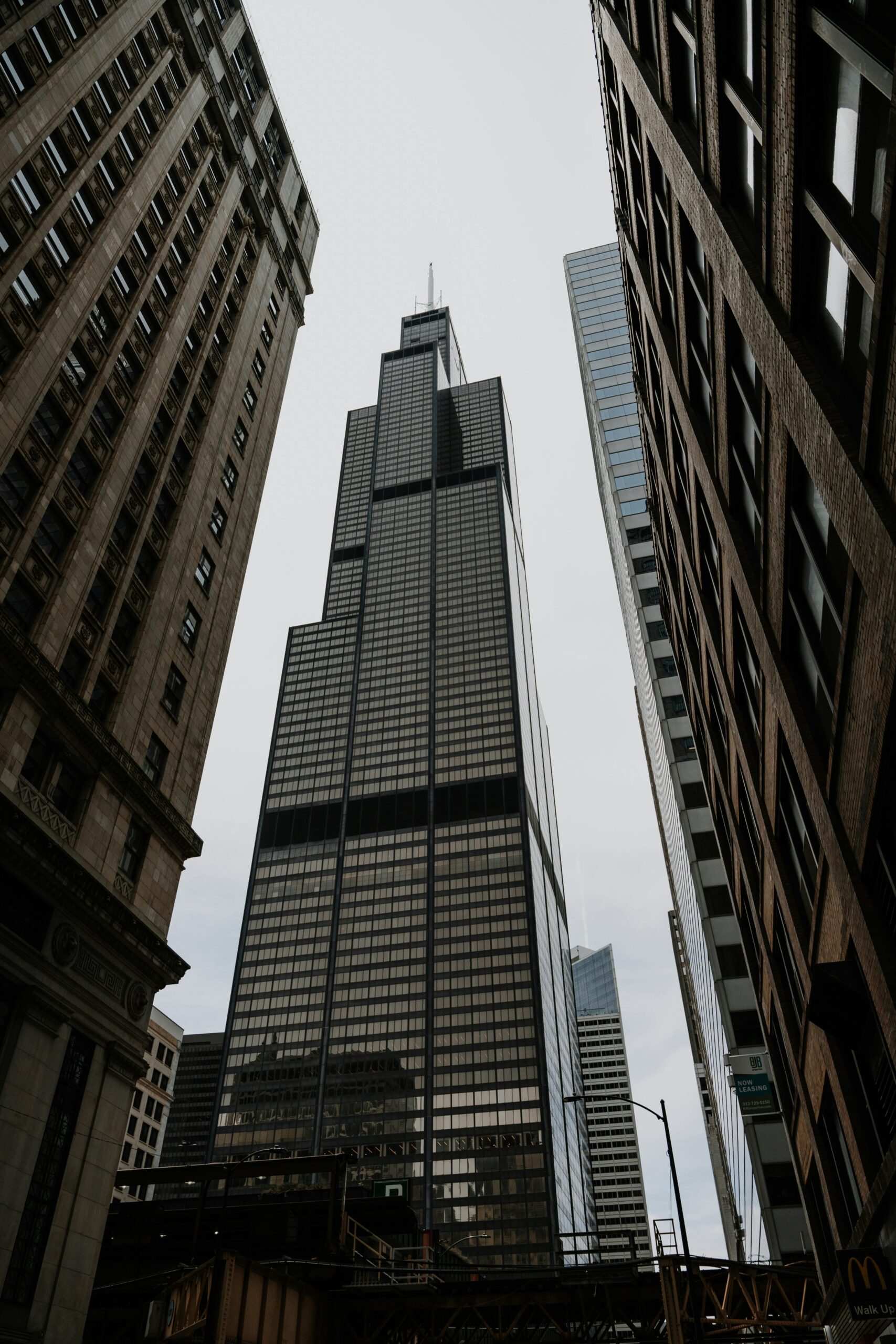A Battle in the Sky: America’s First Skyscrapers
In the late 19th and early 20th centuries, two American cities—Chicago and New York—were locked in an architectural rivalry that would shape the modern skyline as we know it. As both cities experienced rapid economic growth, urban planners, architects, and developers were determined to build upwards, leading to a race for height and innovation. This competition wasn’t just about constructing tall buildings; it was about redefining the limits of architecture and human achievement.
The rivalry between Chicago and New York laid the foundation for modern skyscraper design and revolutionized how cities grew vertically. In this article, we will explore the historical and technological developments that drove these two cities to compete for the sky.
Chicago’s Ascent: Rebuilding After the Fire
The Great Chicago Fire of 1871 devastated much of the city, but it also offered an unprecedented opportunity for reinvention. As Chicago rose from the ashes, it became a laboratory for architectural innovation. One of the most significant developments to emerge from this rebuilding was the birth of the skyscraper.
In 1885, the Home Insurance Building was completed in Chicago, marking the world’s first skyscraper. At ten stories high, it wasn’t just about height but about the revolutionary use of a steel frame, allowing for taller, more stable structures than ever before. Architects like Louis Sullivan and engineers like William Le Baron Jenney led the charge, integrating functionality with aesthetic appeal. This innovation made Chicago the birthplace of the modern skyscraper, setting a precedent for vertical architecture.
New York Enters the Race: Taller, Bolder, Iconic
As Chicago established itself as a pioneer in skyscraper design, New York was not far behind. By the late 19th century, New York City’s rapid urbanization and booming economy created a pressing need for vertical growth. The city’s limited space, combined with its ambition to become a global commercial hub, made it the perfect environment for skyscrapers to thrive.
New York began its vertical ascent with iconic structures like the Flatiron Building in 1902, which stood out for its unusual triangular shape and towering presence. But it wasn’t just about building tall; it was about creating bold, architectural landmarks. New York architects, including Daniel Burnham and later William Van Alen, introduced groundbreaking designs that would culminate in iconic buildings like the Chrysler Building and the Empire State Building. These structures not only showcased engineering feats but also embraced art deco design, making New York’s skyline both taller and more visually striking.
The Race to the Top: Competing for Height
As the rivalry between Chicago and New York heated up, the race to construct the tallest building in the world became a symbol of urban power and pride. Initially, Chicago held the title with buildings like the Masonic Temple and the Monadnock Building. However, New York would soon surpass Chicago’s heights with buildings like the Woolworth Building and eventually the Chrysler and Empire State Buildings.
Technological advancements played a key role in this race. The development of steel-frame construction and the invention of elevators allowed architects to build taller than ever before. By the early 1930s, the competition reached its peak with New York’s Empire State Building, which, at 1,454 feet tall, remained the world’s tallest building for over 40 years. This rivalry not only drove innovations in engineering but also forever changed the skylines of these two cities, establishing them as centers of architectural achievement.
Architectural Innovation: Steel, Glass, and Design
The rivalry between Chicago and New York spurred remarkable innovations in architecture, including the development of steel-frame construction. This revolutionary technique replaced traditional load-bearing walls with steel skeletons, allowing buildings to soar to new heights without sacrificing stability. Chicago was at the forefront of this innovation, with architects like Louis Sullivan leading the way. Known as the “father of skyscrapers,” Sullivan’s design philosophy of “form follows function” shaped early skyscrapers into practical yet elegant structures.
Meanwhile, New York’s architects like William Van Alen embraced bold designs, especially in the iconic Chrysler Building, which epitomized the art deco style. The use of glass, decorative spires, and geometric patterns became hallmarks of New York’s skyscrapers, blending aesthetics with engineering. Daniel Burnham, a key figure in both cities, helped design urban spaces that combined modern functionality with artistic grandeur, leaving a lasting impact on American cityscapes.
Cultural and Economic Impact: Skyscrapers as Symbols
Beyond their architectural significance, skyscrapers quickly became symbols of economic power and innovation. In Chicago, these towering structures represented the city’s resilience and industrial might, especially in the wake of the Great Fire. Skyscrapers signaled the city’s rise as a commercial hub, reflecting its economic strength and forward-thinking spirit.
In New York, skyscrapers like the Empire State Building and the Chrysler Building embodied the city’s ambition to become the financial capital of the world. These buildings were not just feats of engineering; they symbolized New York’s cultural dominance and economic growth, turning the skyline into an emblem of progress and power. This rivalry helped shape the identities of both cities, with skyscrapers becoming cultural icons that defined their global influence.
Legacy of the Rivalry: Shaping Future Skylines
The competition between Chicago and New York left a lasting legacy that shaped skylines across the U.S. and around the world. The architectural innovations developed during this period, particularly steel-frame construction and elevators, became the foundation for skyscrapers in cities like San Francisco, Los Angeles, and even internationally in cities like Dubai and Shanghai.
As other cities sought to build taller and more impressive structures, the influence of Chicago and New York’s rivalry could be seen in their design choices and engineering approaches. This friendly competition also encouraged architects and engineers to push the limits of what was possible, sparking a global fascination with building toward the sky.
A Timeless Rivalry in the Sky
The skyscraper rivalry between Chicago and New York was more than a contest of height—it was a battle of innovation, identity, and ambition. These two cities not only redefined their own landscapes but also set a global precedent for modern urban architecture. Today, their skyscrapers remain towering monuments to human ingenuity and the enduring desire to reach new heights, both literally and figuratively. As cities around the world continue to build skyward, the legacy of this rivalry continues to shape the future of architecture.



